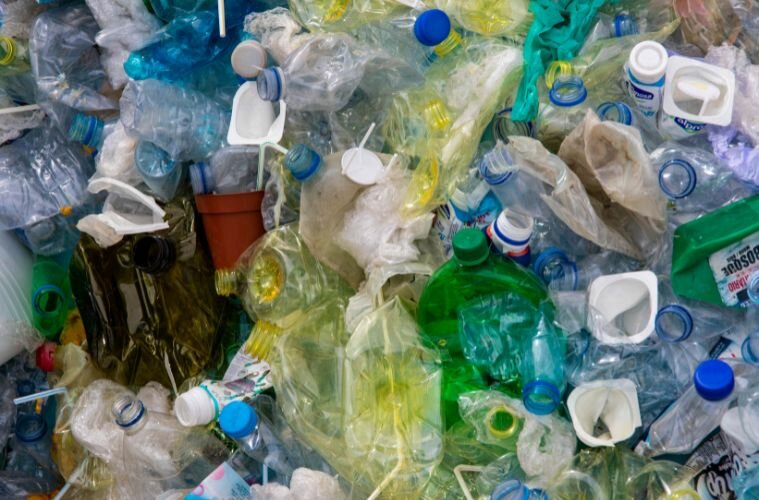Plastic pollution is no longer merely an environmental nuisance—its far-reaching, yet underappreciated, impacts on global climate systems are prompting researchers and policymakers to take notice. The recent report on “Plastics and Climate” shines a light on the many unknowns in our understanding of how plastics—from production to disposal—affect greenhouse gas (GHG) emissions, alter the carbon cycle, and shift Earth’s radiation budget.
The Urgency of Understanding Plastics’ Climate Impacts
Conventional plastics are rooted in the fossil fuel industry, and while their production does not involve combustion directly, every stage of their lifecycle contributes to climate change. From the extraction of raw materials and primary production to end-of-life processes such as incineration or landfilling, plastics account for nearly 4% of current global GHG emissions. More importantly, emerging research indicates that plastics also interfere with natural carbon sinks and perturb energy exchanges between the Earth and its atmosphere. These multifaceted impacts have left scientists with a sobering realization: if unchecked, plastics might consume an ever-growing share of Earth’s limited carbon budget.
Unpacking the Knowledge Gaps
Despite the growing body of scientific evidence, the report reveals significant voids in our understanding. The knowledge gaps can be broadly categorized into three domains:
GHG Emissions Throughout the Plastics Lifecycle
- Incomplete Emissions Data: While there is a decent grasp of GHG outputs from primary production and waste management, less is known about the manufacturing, transportation, and consumption phases.
- Insufficient National and Polymer-Specific Assessments: Studies to date have only addressed 14 out of almost 200 countries, and polymer-specific GHG emission data remain scarce beyond initial production.
- Overlooked Waste Handling Practices: Key processes such as open burning and open dumping—both prevalent in several regions—lack comprehensive, global-scale emissions estimates. Moreover, emissions associated with unmanaged waste—a growing concern—are dramatically underreported.
Impacts on the Carbon Cycle
- Adverse Effects on Carbon Sinks: Plastics interfere with terrestrial, marine, and coastal carbon sinks in varying ways—from impairing the ocean’s biological carbon pump to altering soil respiration processes. Although many studies indicate an overall warming effect (with roughly 68% of tests showing plastics lead to additional warming), conflicting results in specific endpoints (like soil carbon storage and microbial activity) complicate the picture.
- Understudied Ecosystems: Compared to terrestrial and marine settings, coastal blue carbon ecosystems (e.g., mangroves and salt marshes) remain largely unexplored regarding plastic impacts, despite their outsized role in carbon sequestration.
Alterations in Earth’s Radiation Budget
- Scarce Data on Radiative Forcing: The ability of plastic particles to change the Earth’s albedo or to alter atmospheric energy balances is one of the least understood impacts. Few studies have rigorously quantified whether plastics in the atmosphere provide a cooling or warming effect, especially when it comes to indirect radiative forcing via clouds.
- Variability in Plastic Properties: Factors like color, particle size, and chemical composition likely play vital roles in how plastics influence reflectivity and cloud formation. However, current research has only scratched the surface by testing a limited range of these variables.
A Bold Research Agenda for a Complex Problem
In response to these gaps, the report lays out a comprehensive—and much needed—research agenda that can guide scientists, engineers, and policymakers alike:
Enhancing GHG Emissions Data
- Expand Lifecycle Studies: Prioritize detailed data collection on every stage of the plastics lifecycle, with emphasis on transportation, consumption, and unmanaged waste.
- Standardize Measurement Protocols: Develop and adopt standardized methodologies for calculating emissions intensities, making cross-comparison between studies easier.
- Focus on National and Polymer-Specific Assessments: Encourage country-level studies and polymer-specific investigations to reveal localized impacts and to guide targeted mitigation strategies.
Deepening Our Understanding of Carbon Cycle Interactions
- Diverse Ecosystem Experiments: Invest in long-term experimental studies in terrestrial, marine, and coastal blue carbon ecosystems to quantify changes in carbon sequestration.
- Fine-Tune Proxy Measurements: Improve research designs by controlling for confounding factors (such as additives in plastics) to more accurately measure changes in soil organic carbon and related parameters.
- Integrate Modeling with Field Data: Combine rigorous field measurements with advanced modeling to predict the magnitude of plastics’ indirect climatic impacts on carbon sinks.
Quantifying Radiative Impacts with Precision
- Comprehensive Sampling: Increase spatial and temporal sampling of airborne plastic particles, accounting for differences in particle types, colors, and weathering states.
- Determine Direct and Indirect Radiative Forcing: Systematically test how plastics in the atmosphere affect cloud condensation nuclei and the planet’s reflectivity to blend experimental findings into robust climate models.
- Innovative Approaches to Comparative Analysis: Utilize comparative studies—benchmarking plastics against other atmospheric aerosols—to better isolate and quantify their cooling or warming potentials.
Policy Implications and Cross-Sector Collaboration
Filling these knowledge gaps isn’t solely the responsibility of the scientific community. The report suggests that both public and private sectors play a decisive role. International bodies like the IPCC and emerging entities from the UN Plastics Treaty could lead coordinated research efforts. In tandem, transparency in the chemical composition of plastics and improved data-sharing from industries can accelerate efforts to integrate these climate impacts into regulatory frameworks and sustainability metrics.
Looking Forward
As plastic production continues to surge (with estimates predicting a tripling by 2060), effectively addressing these knowledge gaps becomes ever more critical. A detailed and harmonized research effort will not only elucidate the full impact of plastics on our climate but also empower societies across the globe to devise innovative, evidence-based solutions.
The road ahead is challenging but necessary. By aligning scientific inquiry, policy reform, and industrial transparency, we can hope to integrate the missing links into our climate models—ensuring that plastics are no longer the stealthy drivers of climate change they’ve long remained.
Source link : View Article
Author
-

Marybeth Collins is a U.S.-based journalist and writer covering energy and environmental issues for Environment + Energy Leader. Her recent reporting includes topics such as a White House executive order targeting state climate policies, PFAS oversight in biosolids, and Ukraine’s push for energy system modernization. With over 250 articles under her byline, she regularly explores the intersections of policy, clean technology, environmental regulation, and energy resilience.



